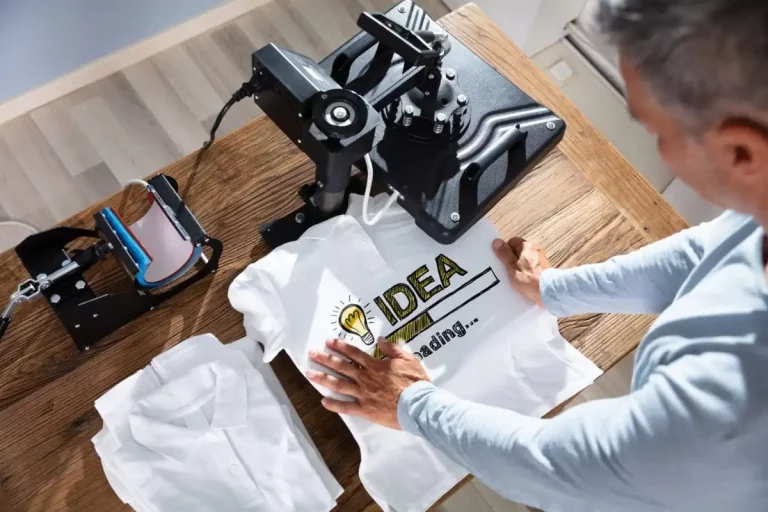Custom Screen Printing for Unique Promotional Merchandise
Custom Screen Printing for Unique Promotional Merchandise
Blog Article
Display Printing Uncovered: Whatever You Required to Find Out About T-Shirt and Garment Printing Techniques
Screen printing is a remarkable approach that integrates art with strategy, providing unlimited opportunities for creative thinking. Ready to discover the necessary aspects that make display printing an art type?
The Basics of Display Printing: Exactly How It Functions
When you plunge right into screen printing, you'll find it's both an art and a science. At its core, screen printing entails producing a pattern, or display, that allows ink to pass with just in specific areas.
Setting the display over the textile, then make use of a squeegee to push ink with the screen onto the garment. Each action is vital, and understanding them will elevate your screen printing skills, changing simple garments into distinct, expressive pieces.
Kinds of Display Printing Techniques
Once you understand the essentials of display printing, it's time to check out the numerous methods that can raise your styles. One popular method is standard display printing, where ink is pressed via a stenciled display. This method is wonderful for strong, vivid shades. There's water-based ink printing, which offers a softer feeling and is green, but it needs a different method to curing.
Another alternative is plastisol printing, known for its durability and brilliant colors, making it a favored for lots of brand names. Experiment with halftone printing to produce gradient results and elaborate layouts.
Necessary Devices for Screen Printing
To achieve spectacular results in screen printing, having the ideal tools is essential. You'll need a strong screen printing frame, which holds the mesh that moves your layout onto the garment. Next off, spend in premium mops; these are important for applying ink evenly across the display.
Picking the Right Inks and Products
When picking inks and products for screen printing, you need to take into account the kind of ink that works best for your project. Assume about material compatibility to guarantee your layouts look last and wonderful long. Discover environment-friendly ink choices to make your printing procedure more lasting.
Kinds Of Display Inks
Picking the best display ink is vital for achieving dynamic, long lasting prints that fulfill your project's requirements. There are numerous kinds of screen inks to take a look at. Specialized inks, such as metal or glow-in-the-dark, can include unique effects to your styles.

Material Compatibility Factors To Consider
Recognizing fabric compatibility is crucial for achieving top quality display prints, specifically considering that different materials react distinctively to various inks. Always check your inks on sample fabric to assure they adhere effectively and keep shade stability. Additionally, maintain in mind that textile weight and texture can impact the final outcome, so choosing the best ink and product combination is important for your task's success.
Eco-Friendly Ink Options
Environmentally friendly inks are ending up being a prominent selection for display printers that desire to minimize their environmental impact while maintaining quality. When picking inks, think about water-based inks, which are less damaging and much easier to clean up contrasted to typical solvents.
In addition, seek inks made from renewable energies, such as soy or vegetable-based choices. By picking the appropriate inks and products, you'll not only produce stunning styles but also contribute to a more sustainable printing process. Make the button, and your prints will reflect your dedication to the atmosphere!
Preparing Your Design for Display Printing

File Style Needs
To ensure your style looks vivid and sharp on material, you'll require to pay close focus to submit style demands for display printing. Make certain your style has a transparent background to avoid unwanted white sides on your prints. Maintain shade modes in mind; CMYK is common for display printing, so transform your RGB designs accordingly.
Shade Splitting Up Methods
Color splitting up is a crucial action in preparing your layout for screen printing, and mastering it can significantly improve your print high quality. You'll need to break your layout right into specific shades, as each color requires a different display during printing. Beginning by identifying all the shades in your style and create layers each. You can utilize software program like Adobe Photoshop or Illustrator to separate and separate shades successfully. Be specific to save each layer as a separate documents, normally in a style like TIFF or PSD. This precision not just assures precise color depiction but additionally enhances the printing procedure. By taking notice of color splitting up, you'll accomplish specialist and dynamic cause your screen-printed garments.
Resolution and Dimension
Accomplishing the most effective results in display printing begins with ensuring your layout has the ideal resolution and dimension. Ideally, your artwork must be at the very least 300 DPI (dots per inch) for sharp, clear prints. If you utilize reduced resolution, your end product may look amateur and pixelated.
When it involves dimension, consider the dimensions of your print location. Design your art work to match the last print dimension, preferably creating it in the actual measurements you'll be publishing. This way, you'll avoid any type of unforeseen scaling concerns.
Always check your style in both vector and raster styles. Vector graphics can be scaled without losing top quality, making them suitable for screen printing. Preparing correctly will guarantee your style looks incredible on every garment!
Step-by-Step Display Printing Refine
Display printing is a dynamic process that allows you to develop vivid designs on various surface areas. To begin, you'll need a screen, emulsion, and your chosen ink. Prepare your display by cleansing it thoroughly. Next, use the solution equally and allow it dry in a dark area. As soon as dry, expose your screen to light with your style positioned on it, which will certainly solidify the emulsion where the light hits, creating a stencil - screen printing kit.
After rinsing the unexposed emulsion, your screen prepares. Establish it up on your printing surface and align your garment beneath it. Put ink onto the screen and make use of a squeegee to press the ink with the stencil onto the textile. Raise the screen thoroughly and let the print dry. Heal the ink utilizing heat to assure toughness. That's it! You have actually efficiently screen published your style.
Tips for Successful Display Printing Projects
While you're diving into your display printing tasks, keep in mind that prep work is crucial to success. Start by gathering all your materials-- inks, mops, screens, and garments. A clean work space assists protect against undesirable errors, so clean up before you start.
Following, verify your art work is high-resolution and appropriately sized for your garment. Evaluate your display for correct exposure and clean it thoroughly to stay clear of spots. When mixing your inks, comply screen printing kit with the supplier's standards to accomplish the appropriate consistency.
During printing, use also stress with your squeegee for consistent outcomes. Do not hurry; take your time to verify each print satisfies your criteria. After printing, let your garments completely dry entirely prior to managing or packaging them.
Finally, always keep a sample of your work for future referral. By doing this, you can analyze your development and enhance your techniques in time. Delighted printing!

Regularly Asked Concerns
Exactly how Lengthy Does It Take to Set up a Screen Printing Work?
Establishing a screen printing task generally takes about thirty minutes to an hour. You'll prepare the displays, mix inks, and change the press. The moment varies based upon complexity and experience, so stay arranged!
Can I Print on Different Textile Types Using the Same Method?
Yes, you can publish on different textile kinds making use of the exact same method, however you'll require to adjust your inks and settings. Some fabrics soak up ink differently, so trying out guarantees the most effective outcomes for every product.
What Are Common Errors to Stay Clear Of in Screen Printing?
When screen printing, stay clear of typical errors like using the wrong ink, ignoring correct exposure times, or skipping pre-press checks. Constantly check your arrangement and preserve clean screens to ensure top quality outcomes each time.
Just How Can I Effectively Clean and Preserve My Screen Printing Devices?
To effectively clean and preserve your screen printing tools, you ought to frequently clean displays with proper solvents, examine mops for wear, and guarantee all devices are kept completely dry and dust-free. Uniformity improves and avoids expensive repair work efficiency.
Is Screen Printing Eco Friendly Contrasted to Other Methods?
Screen printing can be more eco-friendly than other techniques, specifically if you make use of water-based inks and eco-conscious products. By picking lasting materials and practices, you decrease waste and lessen your influence on the earth.
Display Printing Uncovered: Everything You Need to Know Regarding Tee and Garment Printing Strategies
At its core, screen printing entails developing a pattern, or display, that allows ink to pass with just in particular locations. Position the screen over the fabric, then use a squeegee to push ink via the screen onto the garment. One popular approach is traditional display printing, where ink is pushed via a stenciled screen.When picking inks and products for display printing, you require to take into account the kind of ink that functions best for your project.
Report this page